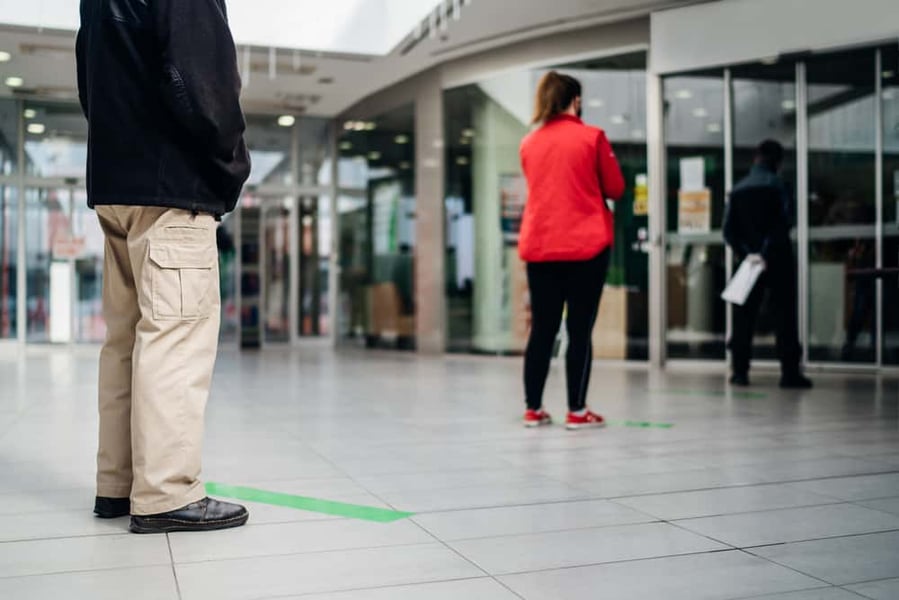
Peter Izard is business development manager at Investec Private Bank
As businesses and society adapt to the new normal brought about by COVID-19, we’re seeing enormous levels of innovation and adaptation, with many businesses completely transforming their operating models in order to keep pace.
This is certainly true of the property sector, which halfway through May started to come out of a ‘deep freeze’ following weeks of being unable to conduct valuations, viewings and other aspects of the process.
In line with a gradual easing of lockdown restrictions, we’ve begun to see measures put in place to get the market slowly moving again.
Yet despite this, there will be a number of effects on how the sector operates, and how that shapes the home buying process, that are here to stay – at least for the foreseeable future.
The rise of virtual viewings
It is no surprise to see online shopping figures surge under lockdown, and the property market is no exception.
Using a property aggregator platform to search online has become commonplace in recent years through sites such as Zoopla and Rightmove, but until now, viewings have typically been conducted face-to-face.
However, with in-person viewings suspended across the board during lockdown, many agents have turned to digital technology to offer alternatives.
The digital process works in a few different ways. Rightmove, for instance, has introduced an ‘online viewing’ label, allowing agents to promote homes that come with pre-recorded video tours.
Other agents favour real-time video tours, which can be conducted ‘live’ over video conference, and which can thus be more interactive, offering the chance for questions along the way.
There are also pieces of software available, such as EyeSpy360, which allows agents to create 360-degree virtual walkthroughs and models of properties, for potential buyers to view from wherever they are in the world.
While these are not new technologies per se, it’s fair to say that they previously existed only on the periphery of agents’ offerings.
Now – and for some time to come – they find themselves quickly accelerated front-and-centre.
From offer to completion
Beyond just the viewings, there are various phases of the home buying journey which could benefit from technological solutions.
In particular, tasks including property surveys, contract exchange and conveyancing each require a great deal of paperwork and, as such, can become a painfully protracted part of the process.
With the pandemic forcing businesses to reassess every stage of their operating model in pursuit of efficiencies and opportunities to streamline, these analogue systems have great scope to be automated, freeing up experts to focus on the more pressing issues at hand.
Thirdfort is an example of a service which draws on data analytics, facial recognition and document-scanning technology to prove the legitimacy of funds while eliminating physical documents from the mix.
This is not to say that human input will become obsolete. Buying a home is not something you do every day, and the importance of expert reassurance is not going anywhere.
Instead, we should look to machines to take on mundane administrative tasks, freeing up experts to spend more time providing specific insight and customised services, at the points in the journey which continue to be reliant on human relationships.
Mortgage broking is one such area that tends to require specific expertise, tailored solutions and regular human contact – particularly for buyers with more complex income structures.
Beyond the crisis
Considered in the context of the crisis, it’s easy to view the adoption of these types of technology as being done through necessity, but they will remain relevant beyond the outbreak.
Prior to COVID-19, the residential property sector had remained relatively unchanged for quite some time.
There is huge scope for the introduction of technology to key points in the home buying journey which can benefit from the flexibility, accessibility and ease that come along with digitisation.
When it comes to viewings, for example, travelling to view multiple properties in various locations can be tiring, time-consuming and logistically challenging, with potential buyers beholden to estate agent opening hours as well as the many other commitments that filled our schedules before the pandemic.
This could well be relegated to the past. Though COVID-19 may have catalysed the shifts we are seeing today, there is no reason why some of the changes it necessitates shouldn’t be here to stay.
At Investec Private Bank, we refer to the start of every home buying journey as a ‘blank sheet of paper’ – no buyer’s requirements are the same as another’s, after all.
We are now at a time when the entire sector is facing a blank sheet of paper. It is an opportunity to look afresh at how we do things.
My belief is that, if harnessed with sensitivity, digital solutions are not just a temporary solution to operating during the pandemic – these are innovative measures which can improve the process in the long term, too.


